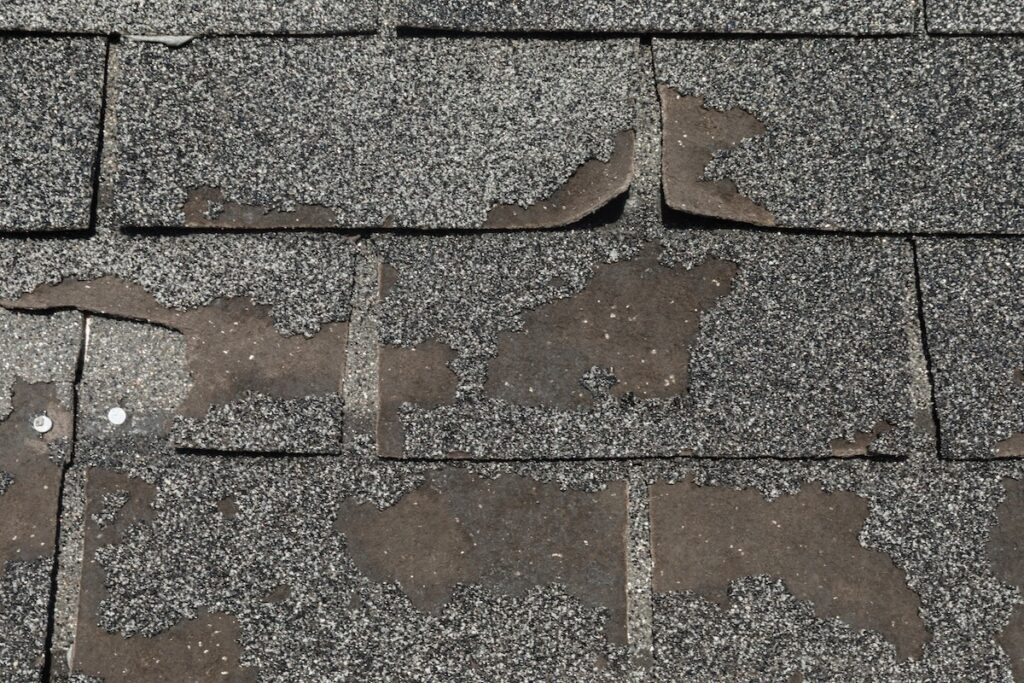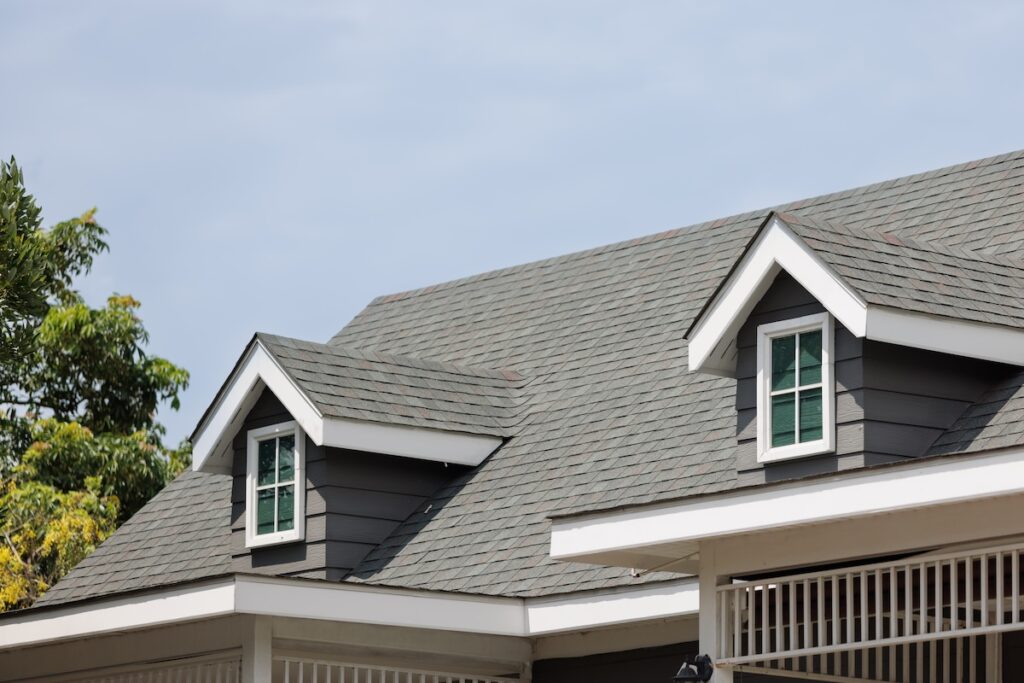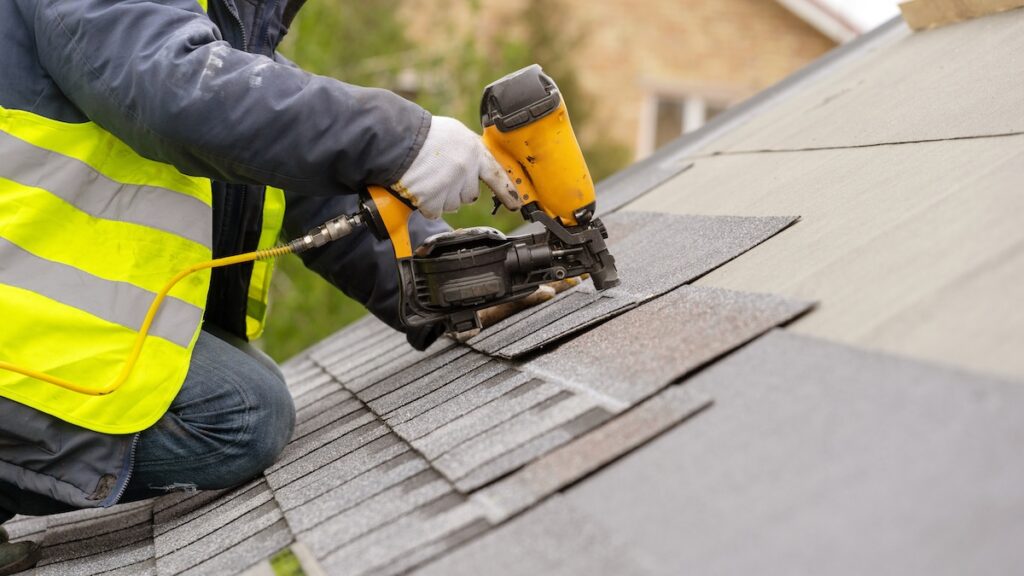
Shingle Roof Repair (Step By Step Guide)
6/06/25
6 Min Read
Shingle roof repair is one of the most common roofing tasks homeowners face—and one of the most important. When a few shingles are missing, cracked, or curling, handling the repair promptly can prevent bigger issues like leaks, rot, or structural damage. Whether you plan to take a DIY approach or hire a pro, understanding the process helps you protect your investment and extend the life of your roof.
In this blog, we’ll cover:
- How to identify shingle damage before it spreads
- A step-by-step guide to shingle roof repair
- Tips for preventing future problems
Let’s walk through exactly what it takes to fix a shingle roof the right way.
What Causes Shingle Damage?
Before jumping into repairs, it’s helpful to know why shingles fail in the first place.

Weather Wear
- High winds: Can lift shingles or tear them off completely.
- Hail storms: Cause dents, cracks, or granule loss.
- UV rays: Over time, sun exposure weakens the shingle material.
Age and Normal Wear
- Granule shedding: Shingles naturally lose granules as they age, exposing the base layer.
- Drying and curling: Older shingles may become brittle, curl up at the edges, or crack.
- Loss of adhesion: The adhesive strip can weaken, making shingles susceptible to wind damage.
Poor Installation
- Incorrect nailing: Nails placed too high or too few in number can cause premature failure.
- Inadequate ventilation: Overheating in the attic can cause shingles to blister and wear out faster.
- Improper layering: Can lead to uneven wear and water infiltration.
7 Signs You Need Shingle Roof Repair
Here’s how to tell if your roof needs attention:
- Missing shingles: Obvious bare spots on the roof are a top repair priority.
- Cracked or curled shingles: These indicate aging or heat damage.
- Granules in gutters: Excess granule loss is a red flag for shingle wear.
- Water stains inside: Leaks in the attic or ceilings may be tied to damaged shingles.
- Visible nails: Exposed or popped nails can loosen shingles and invite leaks.
- Moss or algae: Organic growth can trap moisture and shorten roof lifespan.
- Dented shingles: Often caused by hail or falling debris and may void warranties if left unaddressed.
Tools and Materials You’ll Need
For homeowners attempting a DIY fix, gather the following before starting your shingle roof repair:
- Flat pry bar or roofing shovel
- Hammer and roofing nails
- Replacement shingles (match color and type)
- Roofing cement or adhesive
- Utility knife
- Ladder and fall protection gear
- Gloves and safety glasses
Note: If you’re uncomfortable with heights or unsure of the damage’s scope, always call a professional.
Step-By-Step Shingle Roof Repair Guide
Now that you’re prepared, here’s how to fix damaged shingles safely and correctly.
1. Inspect and Identify
- Locate damage: Scan the roof for lifted, cracked, or missing shingles.
- Check surrounding areas: Damage can extend beyond the visible spot—especially if water has entered.
- Document issues: Take photos for insurance if storm damage is involved.
2. Remove the Damaged Shingle
- Loosen surrounding shingles: Gently lift the shingles above the damaged one using a pry bar.
- Remove nails: Slide the bar under the damaged shingle to pull out the nails holding it in place.
- Slide the shingle out: Discard any cracked or torn materials.
3. Install the New Shingle
- Slide into place: Position the new shingle so it aligns with those around it.
- Nail down: Use four roofing nails in the same pattern as the original installation.
- Seal edges: Apply a dab of roofing cement under each corner to secure it against wind lift.
4. Re-secure Overlapping Shingles
- Press down top shingles: Ensure they lie flat over the replacement.
- Seal with cement: Use adhesive as needed to help everything bond back together.
- Check for gaps: Look closely to ensure no space is left for water or wind intrusion.
A successful repair restores the immediate integrity of your roof, but for true long-term confidence, the quality of the material is paramount. To ensure your next replacement roof is built with top-tier products that provide maximum durability and style, review our comprehensive list of the best roof shingles on the market.
Tips to Prevent Future Shingle Damage
Repairing is great—but preventing problems in the first place is even better.

Regular Inspections
- Schedule seasonal checks: Inspect your roof in spring and fall for early signs of wear.
- After-storm reviews: Look for damage after severe weather, even if leaks aren’t visible.
- Use binoculars: If you prefer staying on the ground, a visual scan from the yard still helps.
Maintain Proper Ventilation
- Avoid heat buildup: Adequate attic airflow keeps shingles from warping and extends their lifespan.
- Install soffit and roof vents: These promote year-round air circulation.
Trim Nearby Trees
- Prevent impact damage: Overhanging limbs can fall or scrape the roof during storms.
- Reduce moss growth: Less shade means drier conditions, which helps prevent moss and algae.
Clean Gutters
- Prevent water backups: Clogged gutters cause overflow that can soak shingles and fascia.
- Direct water away: Clean gutters and downspouts move rain safely off your roof.
When to Call a Roofing Professional
While minor repairs are manageable for some homeowners, larger issues should be left to the pros.

Hire Help If:
- Multiple areas are damaged: A few bad shingles might signal widespread wear.
- You’re unsure about safety: Working on a steep roof without fall protection can be dangerous.
- Leaks are ongoing: Persistent water stains may mean hidden damage under the shingles.
- You see structural problems: Sagging areas or rotting wood beneath shingles need expert attention.
What a Roofer Can Do
- Comprehensive inspection: Pros can find hidden problems homeowners might miss.
- Full tear-off and replacement: For roofs nearing end-of-life, a full replacement is often the smartest option.
- Warranty-backed work: Professional repairs usually include labor and material guarantees.
Roof Repair vs. Replacement: How to Decide
Sometimes repairing a few shingles isn’t enough. Here’s how to tell what your roof truly needs.
Choose Repair If:
- The damage is confined to a small area
- Your roof is less than 10–15 years old
- Shingles around the damage are in good condition
- You’re addressing storm damage quickly
Choose Replacement If:
- You’ve had to repair multiple sections recently
- Shingles are curling, cracking, or shedding granules across the roof
- The roof is over 20 years old
- Leaks are happening in multiple places
Before tackling any roofing project, from the smallest patch to a major overhaul, the most critical step is mastering the art of measuring a roof for shingles. This initial calculation is non-negotiable for both repairs and full replacements because accurate dimensions prevent material waste, ensure your budget is precise, and are the foundation for a professional, code-compliant installation.
Repair Smarter With Buckeye State Roofing
Shingle roof repair doesn’t have to be overwhelming. By catching issues early, using the right tools, and following a proven step-by-step process, you can restore your roof’s integrity and avoid future damage. But if the repair seems too large—or the damage too deep—don’t take chances.
At Buckeye State Roofing, we specialize in reliable, professional shingle repair and full replacements. Whether you need help after a storm or want a full inspection before tackling a fix, contact us today for a free inspection and expert service you can trust.
